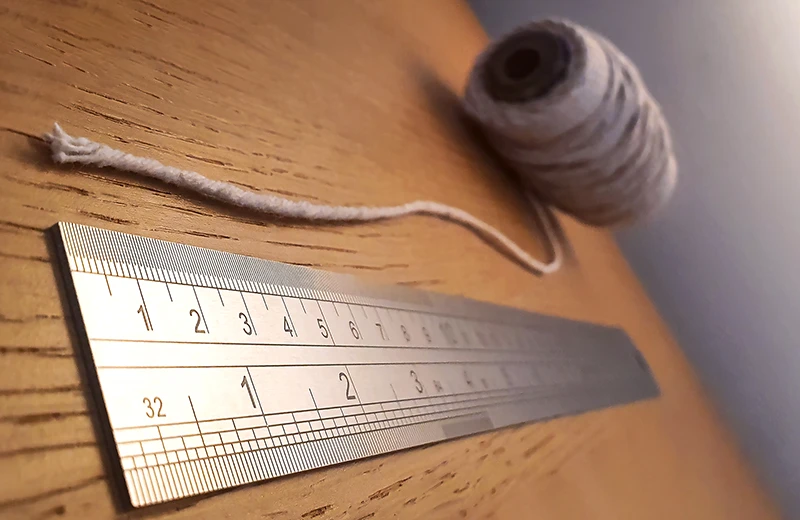Mixing a song is like doing a jigsaw puzzle.
How might you respond to the question, “How long does it take to do a jigsaw puzzle?”
Probably with the obvious response;
- It depends how many pieces there are.
- It depends how hard the puzzle is.
Estimating how long it will take to mix a song, and therefore offering a reliable quote for it, is a bit like quoting for the time it might take to do a jigsaw or a Sodoku. You may start with the best of intentions, but the scale of the challenge is only realised upon getting stuck into it, and so the generous estimation offered at the outset may soon reveal itself to be exactly that, leaving the mix engineer in the trepidatious position of having promised something unrealistic, and therefore burdening himself with stress and potential burn-out in order to make good on his misjudged promise. Guilty, as charged.
Add to that the fact that the human mind is simply not capable of focussing on the same piece of music, over and over again, non-stop, all day, without diminishing its ability to make good objective judgements, even when factoring in breaks for leg-stretching and lunch-munching, and the initial estimation quickly starts to seem like some kind of insane fantasy.
It is true that I have done occasional weekend recording sessions where the mix was thrown together in the dwindling hours and just happened to come out sounding great, sometimes after having given a long speech about how that literally never happens. Some of my favourite sessions were of this nature, and the sheer immediacy of them – the fact that lightning in a bottle was successfully captured, and no-one got fatigued or bogged down with any of the normal obsessive sticking points that often plague ongoing production projects – meant that everyone could walk away from the session feeling relatively chuffed, rather than flat out exhausted and vowing not to listen to it again for at least a year. This is one among many reasons why perfectionism is not your friend.
However, mixes of this nature are rare, and exemplary of a particular set of circumstances; usually such projects have a highly organic aesthetic that lends itself well to not sounding “perfect” and doesn’t warrant any overt post-production trickery. The musicians were satisfied with their performances after one or two takes with no need for editing or correction, the instruments all sounded great quickly and easily, and the mix just happened to gel together without much coercion. In short, a lot of the problems that typically need to be solved at the mix stage were not present, and so banging together a rough mix actually sufficed for the intended purpose, accepting the slightly rough n’ ready style as part of the inherent charm of the music.
This almost never happens. In 99% of cases, getting something to sound its best takes work. And work takes time, plus a lot of breaks.
What is Mixing?
I often think of mixing as like printing an image with one of those old dot matrix printers. As the print head moves repeatedly back and forth across the page, the image slowly forms in front of you. It’s a frustratingly slow, noisy and imperfect process.
The goal of mixing is to balance all instruments within the stereo field so that they sit together in a natural and complementary way. For recorded music, this can often be quite a challenge. Sometimes I feel quite jealous of electronic music producers, who have the luxury of being able to sculpt sounds from scratch to serve specific purposes; if a hole is present somewhere in the mix, a synth can be programmed to plug it, with no extraneous noise that needs to be managed through technical trickery. This is no denigration of that particular enterprise, or the skill required to do a good job of it, but mixing live instruments definitely presents a unique set of challenges, with ever shifting goalposts from one band to the next. There is a general methodology that I will follow when mixing a band, but the point at which this methodology falls off the rails of idealism and turns into a wrestling match with a slippery fish varies from one project to the next.
Broadly speaking, the methodology for a run-of-the-mill rock band runs along the following lines, but bear in mind, this is very approximate and assumes a project of one song being mixed thoroughly:
| # | Task | Details | Time taken |
|---|---|---|---|
| 1. | Organise project | Decluttering, colour coding, bouncing, general organisation. | 1-3 hours. |
| 2. | Editing | Drum editing, comping vocals, tidying up takes, fixing problems, cross-fading, etc. | 1-3 hours for light work. 8+ hours for extensive drum editing, vocal pitch correction or other problem-solving. |
| 3. | Mix drums | Establish/refine a basic drum sound from a combination of close mics and room mics, with use of sweetening EQ and dynamics processing. Toms may be manually isolated, and reinforcing samples may be added if necessary. | 1-3 hours for a good kit played well. 6-8 hours to address significant problems. |
| 4. | Mix bass | Establish/refine a basic bass sound from a combination of mics and DI, and mix with drums. Longer required if the bass sound changes with distortion, FX, etc. | 1-2 hours. |
| 5. | Mix guitars | Establish/refine basic guitar sounds from a combination of mics and DI, and mix with bass and drums. More guitars may take longer (but not always). | 1-4 hours. |
| 6. | Mix vocals | Establish/refine basic vocal sound using EQ and compression, manually align harmonies, BVs, and add into the mix. More vocals take longer. | 1-3 hours. |
| 7. | Overall balance | Create a good balance of all elements within the stereo field, that work well with each other. This is likely to entail fine-tune adjustment of EQ, compression, etc of all instruments. | 1-2 hours. |
| 8. | Focus on details | Creation of lots of automation throughout the song. This may include:Balance of guitars (widening in chorus, specific flourishes boosted, etc).Change in vocal sound between verse and chorus.Side-stick hits not sufficiently cutting through.Various overdubs/samples need addressing. | 1-3 hours for light work. 8+ hours for extensive work. |
| 9. | Overall mix | After a break, preferably of a day or more, the overall mix should be reviewed again, with adjustments made where necessary. | 1-3 hours. |
| 10. | Tweak | A break of a week or more is optimal to clear my mind and allow a more objective overview of the mix. | 1-3 hours. |
| 11. | Tweak | Ditto. | 1-3 hours. |
| 12. | Tweak | Ditto, except this time I’ll have the band present to make whatever adjustments they wish to make. | 1-3 hours. |
Mixing a Quick Recording Session
Most bands are very conscious of budget. This is quite understandable. And with budget being a forefront concern, they try to cram as much recording into as small a time frame as possible. Let’s say a weekend to record a handful of songs. Although quite common, the reality of that scenario is that harsh time constraints are being imposed upon the session, and therefore the degree to which it’s physically possible to achieve the fantasy sound that they are dreaming of is severely curtailed. Failing to allocate due care and attention at the recording stage risks piling on pressure to the post-production stage – patching a hole over here only means the pipe bursts over there. To properly ensure a healthy flow we either need to decrease the water pressure or invest in a bigger pipe.
In our weekend session we only have time to record exactly what is in front of us, no fuss, no faff. We can’t experiment with tones, we can’t try things out, listen, review, and course-correct where necessary. We simply have to get it down and hope for the best. This is a gamble, because a recording session is a process of discovery, and it’s not obvious from the outset how it’s likely to unfold. You may start with the best of intentions, but if something’s not working then we should take steps to address it, and we should have allowed ourselves a sensible amount of time to do that. When time is against us, all concerns are reduced to “just get it down”. We patch the hole, only for the leak to spring up somewhere further down the pipe.
So we come to the end of the weekend recording session, we’ve scrambled to record all the necessary parts, overdubs, several vocal takes, a couple of different versions of the solo, etc, etc. By this point the project looks like a bomb has exploded in it because no time was available for project maintenance; automation lines are everywhere, various takes litter the screen with quick, scrappy edits yet to be properly addressed, and the track count is running into the 80s, with bouncing down of multiple microphones yet to be performed. The more songs there are, the worse this looks. The question is then asked “how long do you reckon it’ll take to mix this?”
Let’s go back to our jigsaw analogy:
- How many pieces are there?
- How hard is the puzzle?
In this instance we’ve ensured that the puzzle is as hard as possible, by failing to pay due care and attention to the recording, instead leaving fate to determine how successfully the elements can be moulded together in the mix. This is often encapsulated by phrases such as “the snare isn’t cutting through enough”, or “that riff is getting lost in the heavy bit”. Indeed. That’s because we steamrollered through the recording, and now we’re noticing things that would have been addressed earlier, had we allocated more time to pre-production, performance and recording. At this point those sorts of things are a major hassle to change, perhaps even requiring re-recording. Ultimately, if you want it to sound right, these are not issues that should be left until the mix stage to start being concerned about.
Mixing on the Same Day as Recording
“If we finish early, can we spend the last few hours mixing?”
Despite my earlier confession that it’s not inconceivable that a session can be recorded, mixed and put to bed in the space of a weekend, I must reiterate how unrealistic this is as a base expectation, and nothing underscores this kind of wishful thinking more than the aforementioned question. Yes, we can certainly do whatever tinkering is possible in such a short allotment of time, but don’t imagine it’s likely that we can pull everything together with a bow on top – to the satisfaction of your future self listening to it on your home speakers – especially after I’ve spent the day recording, problem-solving, jumping in and out of my seat and generally exerting the limits of my attention span. To delve into the intricacies of the mix at this stage, while the band sits behind me restlessly chattering, noodling on guitars and boiling the kettle, will likely harbour only very rough results.
As I have already discussed, proper mixing is rarely as simple as setting a few levels and hitting “Export”. Instead it can require very intense focus, especially for complex songs with lots of different sections, each requiring a separate mix in its own right. Part of the problem here, apart from the obvious lack of time, is the reality of human auditory perception. Mixing can be a quagmire in which it’s possible to exceed your concentration threshold in any one of a number of different areas, such that noise fatigue prevents you from making sensible decisions. For example, sometimes I’ll put four or eight bars of a tricky section on a loop, in order that I can work specifically on that bit. Listening to the same thing round and round for a substantial length of time can cause you to seriously lose focus on the bigger picture in a way that cannot be reclaimed without stepping away from it for the day. Take right now, for example. I’ve just spent hours sat on my sofa typing away on a laptop in order to get this blog finished before going to bed. At this point I’ve had to invert the screen colours because it was hurting my eyes, and still when I look up I see lines of text burnt across my field of vision. At least in this case when I look up I also see Murray lying in the middle of my floor, looking unspeakably cute and providing welcome relief from the task of endlessly typing all these words:

You get my point – intense focus on small details for long periods of time can seriously inhibit your ability to step back and look at the bigger picture. So if you weren’t banking on a picture of a cat being inserted half-way through your mix, it may be sensible to allocate sufficient mixing time to ensure that such questionable decisions are reviewed in the fresh light of a new day.
Mixing With The Band Present
I’ve just touched on this, so you’ll be unsurprised to read that my opinion is that it’s not usually a good idea. It’s just too hard to concentrate when people are talking or generally being disruptive behind you. Again, if you were sat next to me as I type this, chatting away or questioning each sentence as it falls out of my fingers onto the keyboard, I would firstly ask how you got into my house, and secondly ask you to leave so that I could work in peace.
Aside from the overt distraction, the psychological pressure it can assert is often very detrimental to workflow. For example, sometimes mixing requires experimentation; you might try something – maybe it’ll work, maybe it won’t. But if someone is standing behind you ready to pounce on every move you make it can devalue your level of confidence and tempt you away from trying such things in the first place. You need to exercise some degree of freedom, and a hyper critical back-seat driver does not provide a context in which such freedom can be enjoyed.
The danger of course is that, when mixing your music, I wouldn’t want to do anything radical that you might disapprove of, and that is a principle I take very seriously. I’m quite aware of the horror stories in which precious producers cannot accept criticism of their belaboured genius, and engage in petty arguments about how the mix “should” be. This is pretty unprofessional behaviour, and I make a point of steering away from it. Ultimately, creative decision-making rests in the hands of the client, not the engineer. However, I don’t consider mixing to be a process of stripping everything down and rebuilding it, replete with fancy production constituting a departure from the direction in which we were previously heading. Usually – as already discussed – it’s a case of simply cleaning up what’s already there and making it work as a cohesive piece of music. It’s seldom rocket science to determine which direction a mix should be going in, because the session has already dictated that direction of travel anyway, and my reading of the band’s preferences throughout our working relationship thus far provides a fairly reliable guide for how to take it forward.
Generally I will bring the band in for the final mix, once all the technical stuff is done, so that they can have their input as they see fit. At that point I’m more than happy to turn things up or down, move things around, add a delay here, get rid of a reverb there – whatever tweaking is necessary to make them happy with the end result, but certainly the bulk of the work up to that point is much easier done without distraction.
Getting Someone Else To Mix Your Project
Sometimes it’s the case that I work on a project over a number of days, weeks or months, and then that session is bounced down to individual tracks and handed to a third-party mix engineer for mixing. I am not a fan of this. I’ll explain why.
My recording style is quite specific. I use lots of room mics on the drums, particular combinations of mics on guitar amps, and have a fairly well-rehearsed set of tricks up my sleeve to complement the “organic” aesthetic that tends to characterise my recordings. In short, I know what to do with the stuff I record. Moreover, up until that point I feel somewhat of a responsibility for stewarding the session, and ensuring that every creative decision was to the approval of the band – I had the pleasure of watching them dancing around the control room to their own music, heads bopping with the excitement of hearing themselves played back loud through great sounding speakers. It’s quite a feeling, and it reflects the shared experience we have all been having up to that point. A mix has begun to naturally formulate within the project – various plugins have been added and technical decisions have embedded themselves intractably into the workflow.
Then, at this point, you hit a hard stop, break it all down and hand it over to someone who has had no insight into the project whatsoever, and is inherently unsympathetic to the way things have been done up to that point. They usually have their own idea of what a mix should sound like, and so they set about forcing the recording, which up to now has been a collaborative effort made with great care and attention to detail, to conform to their pre-conceived notion of a “good sounding” mix. Very often this equates to a benchmark set by 99% of other recordings in that genre. For me, a band should sound unique, and their individual style should emanate from the speakers through a concatenation of all of their aesthetic choices. Many mix engineers, on the other hand, see a mix as an assembly line process that can be blindly applied to everything. This is why so many bands end up with identical sounding production.
The first thing to go is the drum room mics. For me, they’re an integral part of the drum sound and should be treated in a very specific way, but our external mix guy has no idea of their intended purpose, so into the bin they go. Then all the drums get sampled. Never mind the conversations we had about appropriate snare sounds or the time we invested tinkering with tuning, the mix guy can do his job much more quickly if he just triggers samples for the kick, snare and toms. Magic! Turns out we could have just used a biscuit tin. All that’s left of the original drum recording is the overheads, so a quick bit of high-pass filtering, some compression, and voila! The cymbals now float above the hit-perfect drum samples with boring, stale precision. Suddenly very little is left of the original performance at all. Of course, I was also asked to bounce down the DI signals for each instrument, so those are run through the mix engineer’s go-to amp simulator presets. And there we are! It may no longer relate to anything we did in the session, but at least it didn’t cost you much!
I don’t like it, and I seldom think it’s a wise choice. I never recognise the result as something that I worked on, and so we may as well have not bothered.
Mixing a Project Recorded by Someone Else
Contrary to my protestations about getting someone else to mix my work, I am generally happy to mix projects recorded elsewhere.
When I do this, sometimes I’ll even employ the previously scorned tricks of sample replacement, re-amping, etc, but usually that’s in cases where there are fundamental problems with the recording that can only be solved by extreme measures such as these. I wouldn’t do it unless absolutely necessary, and I’d make sure that everything I do is in accordance with the desired aesthetic of the band. Often I’ll start with the rough mix, open up a conversation with the band about what they do or don’t like about that mix, and use that as my starting point. I’ll try to preserve what is fundamentally desirable about that mix, and build on that to work towards a higher calibre end result. If this ultimately entails artificially adding room ambience to the drum kit through sample manipulation, then so be it.
However, when all is said and done, if the recording has been carried out by a competant engineer in a decent studio then this approach may also be a sub-optimal one. When you’ve paid for a specific producer to achieve a specific sound, you should really trust him to see it through to completion unless there’s a good reason not to, because he is the most closely affiliated with that particular working methodology. Mixing should be about piecing together what already exists, rather than rebuilding it from scratch and forming it into something radically different, unless it’s clearly a repair job. If you or your mate recorded it under budget conditions and now you want a pro to step in and pull it together at the mix stage, then sure, make that call. But just be wary of cross-contaminating production styles by using a different recording and mix engineer without good reason.
How Long Does it Take to Mix a Song?
To do it well – quite a while, usually.





